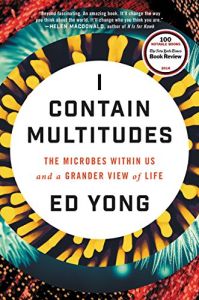Join getAbstract to access the summary!

Join getAbstract to access the summary!
Ed Yong
I Contain Multitudes
The Microbes Within Us and a Grander View of Life
Ecco, 2016
What's inside?
A complex world of microbes resides in and on you. What can you learn from your bacterial reality?
Recommendation
Ed Yong, a science writer for The Atlantic and National Geographic, reveals humankind’s ever-shifting bacterial reality. He takes a bacterium’s eye view of the origins of life on Earth, traveling from bacteria’s evolution to modern efforts to fight disease. In places, the material can be somewhat icky – at least, for nonscientists who don’t really think about hosting a universe of microscopic critters – yet it is overall charming, illuminating and hypnotic. Yong offers a different history of life than you likely learned in school and outlines possibilities for what bacteria might do for the world. Sometimes whimsical, sometimes poetic, always scientific, he approaches microbes with a sense of humor. getAbstract recommends Yong’s exploration to anyone interested in science, medicine, or the countless tiny beings living in and on your skin.
Summary
About the Author
Ed Yong, a staff science writer for The Atlantic and National Geographic magazine, hosts the Not Exactly Rocket Science blog. His work has won several awards, including the National Academy of Science’s National Academies Communication Award.




















Comment on this summary